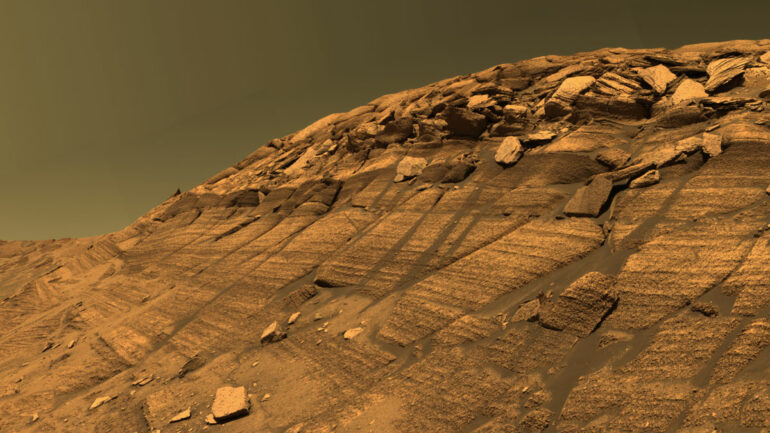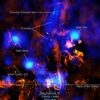There is a reason that NASA’s Opportunity rover explored Mars’s Meridiani Planum region for 14 years: The locale could hold crucial hints about the Red Planet’s early geology and environment.
The region’s Burns formation, a layer of sandstone embedded with spherules of hematite referred to as “blueberries,” is of particular interest to scientists because it shows hallmarks of liquid water and has a sulfur-rich composition that echoes features common across Mars. The Burns formation lies atop a thin rock layer called the Grasberg formation, and in a new study published in the Journal of Geophysical Research: Planets, Thomas McCollom and Brian Hynek propose a novel, common origin story for the two.
The idea is based on the recent finding that the Burns and Grasberg rocks are chemically similar, except that the former are enriched in magnesium and sulfate.
Previously, there were two main hypotheses to explain the Burns formation’s chemical composition. One family of models suggested that the original sands were a combination of ancient silicates and sulfate salts of iron, magnesium, and calcium that precipitated from evaporating groundwater on the margins of ancient lakes. A second group of models proposed that the sandstones began as basaltic ash and were transformed through the addition of volcanic or atmospheric sulfuric acid.
The authors of the new study put forth a third possibility, that the two formations may come from the same source material, or at least a very similar one. They proposed that the Burns/Grasberg precursor was deposited onto Meridiani Planum as particles of dust or falling ash from nearby volcanic eruptions.
These materials solidified, were weathered to the size of sand grains, and were blown by the wind to their current location. Once settled, the sand dunes experienced periodic flows of groundwater, which enriched the upper layers in magnesium and sulfate. Water flow also cemented the sediments to form the sandstones observed by Opportunity.
The study’s authors constructed a mass balance model simulating this scenario, and using data collected by Opportunity’s Alpha Particle X-ray Spectrometer, they determined that the new hypothesis better matches Opportunity’s observations than other previously proposed mechanisms do.
The findings could shift how scientists think about the environmental conditions on early Mars and transform interpretations of the origin of sulfate-rich deposits found elsewhere on the planet.
More information:
Thomas M. McCollom and Brian Hynek, Proposed Origin of the Burns Formation (Meridiani Planum, Mars) by Erosion, Reworking, and Diagenetic Alteration of a Grasberg‐Like Precursor, Journal of Geophysical Research: Planets (2023). DOI: 10.1029/2022JE007374
Provided by
American Geophysical Union
This story is republished courtesy of Eos, hosted by the American Geophysical Union. Read the original story here.
Citation:
A new origin story for Burns formation on Mars (2023, May 4)



